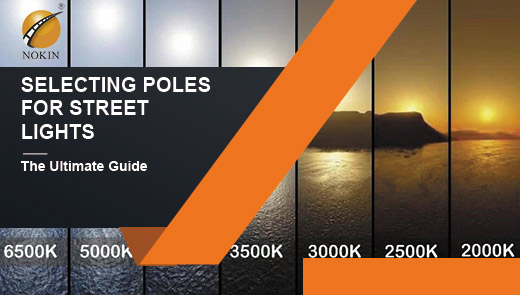Why Solar Street Lights Are the Best Choice for Public Lighting in Africa?
Feb 25, 2025
Amidst the global wave of sustainable energy development, the solar street light market is showing dynamic growth. From 2023 to 2032, its market size is expected to grow exponentially from $5 billion to approximately $15 billion, at a CAGR of 13%. Behind this remarkable growth is the growing global demand for sustainable energy solutions, with governments and organizations striving to reduce carbon footprints and improve energy efficiency. Solar street lighting systems, which utilize renewable solar energy to power street lights, are a perfect fit for the growing demand for environmentally friendly lighting infrastructure.
Against this backdrop, the African solar streetlight market holds great potential. The African continent has unique geographic and energy demand characteristics, so an in-depth discussion of its solar streetlight market is of great significance for understanding global sustainable energy development and the development of the African market.
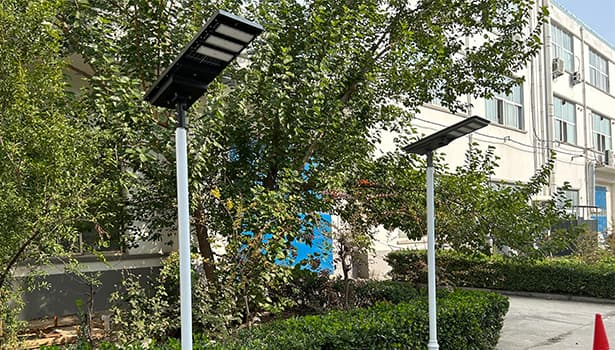
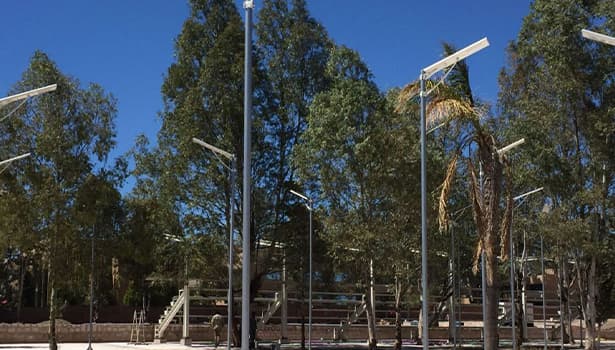
However, the Nigerian government has realized the potential of solar energy and has begun to focus on creating solar infrastructure. For example, the Energy for All program, which aims to provide solar panels to 5 million off-grid, mostly rural, households, is expected to reduce rural poverty and drastically cut the use of biofuels and other non-renewable energy sources. There is also a 200 MW solar photovoltaic project financed by B&S Power (a Singaporean renewable energy company) and Sunnyfield Global (a Nigerian investment entity), located on about 304 hectares of land in the village of Ashama. In addition, several small-scale solar projects, such as solar water heaters, solar stoves, and solar brooders, are gradually being rolled out.
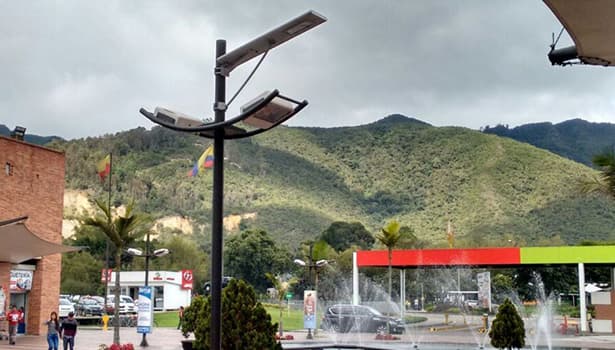
LED lighting dominates: LED lighting is preferred because of its low energy consumption, durability, and long life. Municipalities have achieved significant savings in electricity and maintenance costs by switching to LED streetlights, and the better illumination and color reproduction of LEDs have improved visibility and safety.
The rise of intelligent streetlight systems:Adaptive lighting systems can automatically adjust brightness according to traffic, weather, or time of day, reducing energy consumption during traffic valleys; Remote monitoring and control systems can realize remote management of streetlights and quickly respond to maintenance issues; Integration with the Internet of Things enables streetlights to communicate with other smart city infrastructure, providing data for traffic management, air quality monitoring, and so on.
Popularity of solar streetlights: South Africa has plenty of sunshine, and solar streetlights are becoming increasingly popular as a sustainable solution in off-grid areas. Although the initial investment is high, electricity bill savings and low maintenance costs make them attractive in the long run. In addition, hybrid systems combine solar energy with grid power, ensuring continuous lighting even on cloudy days or in bad weather.
Human-centered lighting design: More attention is paid to the safety and comfort of pedestrians and cyclists, with warmer, more focused lighting in areas where people congregate; efforts are being made to minimize glare and light spillage, reduce light pollution, and make the lighting more precisely serve the area of need.
Application of Motion Sensors: The Dynamic Lighting feature allows streetlights to automatically dim when there is no activity and brighten when there is activity, optimizing energy use and ensuring safety; the sudden brightening of the lights also deters potential criminal activity and enhances urban public safety.
Use of environmentally friendly materials: the increasing use of streetlights with recyclable components reflects a broad commitment to sustainable development; the use of materials with a low environmental impact supports the construction of eco-friendly cities.
Integration of aesthetics and architectural lighting: streetlights are no longer just functional amenities, but are also designed to enhance the aesthetic appeal and unique identity of urban spaces; cities are choosing designs that match their architectural styles, adding character and beauty to public spaces through streetlights.
Lighting as a Service (LaaS) model: municipalities are increasingly working with service providers who are responsible for the installation, maintenance, and management of streetlights, reducing upfront capital investment; the payment model is usually based on energy-saving results or service levels and is cost-effective and flexible.
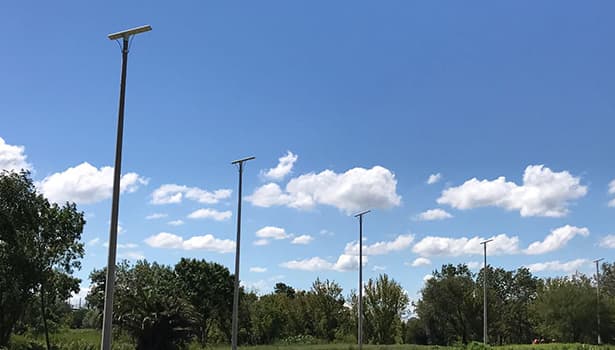
Cost: Although solar streetlights have cost advantages in the long run, the initial procurement and installation costs are relatively high, and there may be financial pressure for some regions and users with poor economic conditions.
Maintenance: The poor infrastructure and shortage of professional technicians in some parts of Africa make it difficult to maintain solar streetlights. Once a streetlight fails, it may not be able to be repaired in time, affecting its normal use.
Cost control: Reduce the cost of solar streetlights through large-scale production, technological innovation, and supply chain optimization. At the same time, the government and financial institutions can provide subsidies, loans, and other support to reduce the financial pressure on users.
Maintenance system construction: Establish a perfect solar streetlight maintenance system, strengthen the training of local technicians, and improve their maintenance ability. Remote monitoring technology can also be introduced to monitor the running status of streetlights in real time to find and solve problems in time.
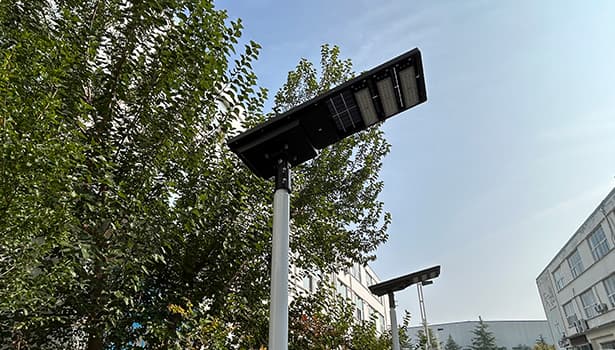
Against this backdrop, the African solar streetlight market holds great potential. The African continent has unique geographic and energy demand characteristics, so an in-depth discussion of its solar streetlight market is of great significance for understanding global sustainable energy development and the development of the African market.

Solar Street Light Market Opportunities in Africa
1.Status of Electricity Consumption and Lighting Gap
As a continent with 15% of the global population, about 90% of the rural population still does not have access to electricity, and the streets of many cities are also lacking in lighting facilities. This situation has led to a low level of development in the lighting industry in Africa, and there is a considerable market gap.2.Market Potential and Scale Expectations
In recent years, with the active exploration of sustainable lighting solutions in Africa, such as the UN-led “Light Up Africa” charity and development program, which provides energy-saving LED lighting for African users, the lighting market in Africa has gradually become active. Especially with the rapid development of modern cities, the demand for diversified LED lighting in markets, stations, shopping centers, and other places is rising year by year, and the solar street light market has great potential. It is expected that in the next few years, with the promotion of infrastructure construction in Africa, the solar street light market size will usher in significant growth.Advantages of solar street lights to meet the needs of Africa
1.Alleviate the power shortage
Africa is one of the regions with the highest solar radiation in the world, with abundant solar energy resources. However, the power supply in Africa is seriously insufficient, and the power shortage has greatly hindered local economic development. Solar street lamps utilize solar panels to absorb solar radiation and store it in batteries to generate electricity, and sufficient solar radiation makes street lamps light for a long time, with no problem. Moreover, most of the regions in Africa have less rainfall, and solar streetlights can be lit stably throughout the year, effectively alleviating the power shortage problem in Africa.2.Adapt to the infrastructure situation
In Africa, there is generally weak traditional infrastructure, power system development is lagging, and obsolete problems. Solar street lights have the characteristics of convenient installation, a wide distribution range, and no need to connect to the power grid, which can easily adapt to the existing infrastructure conditions in Africa and meet the local electricity demand.3.energy saving, environmental protection, and economic advantages
solar street lights to solar energy as energy, with energy saving, environmental protection, and zero electricity costs as the significant advantages. This not only helps to reduce pollution of the environment but also saves a lot of electricity expenses for the local government and users. In the long run, the low maintenance cost and stable operational performance of solar streetlights provide strong support for the sustainable development of Africa.
Solar Street Light Situation in Typical African Countries
1.Kenya
Kenya, as an important trade center in Africa, has rapid economic development. The government promises to provide 70% of the population with electricity by 2025, and this goal promotes the construction boom of Kenya's economic zones, industrial parks, commercial and residential buildings, and tourist resorts. Under such a development trend, Kenya's demand for basic lighting and municipal lighting has increased greatly. With its advantages, solar street light has a broad application prospect in the local area and is expected to become an important solution to meet Kenya's lighting needs.2.Nigeria
Nigeria is an influential country in Africa with abundant sunlight resources. However, the country's renewable energy production is seriously insufficient; about 55% of the 190 million citizens cannot be connected to the grid power, even if access to the user also suffers from blackouts and power cuts. This erratic power supply costs Nigeria an estimated $29 billion annually, hinders economic growth, and forces the population to rely on fossil fuel-powered generators, which is a health hazard.However, the Nigerian government has realized the potential of solar energy and has begun to focus on creating solar infrastructure. For example, the Energy for All program, which aims to provide solar panels to 5 million off-grid, mostly rural, households, is expected to reduce rural poverty and drastically cut the use of biofuels and other non-renewable energy sources. There is also a 200 MW solar photovoltaic project financed by B&S Power (a Singaporean renewable energy company) and Sunnyfield Global (a Nigerian investment entity), located on about 304 hectares of land in the village of Ashama. In addition, several small-scale solar projects, such as solar water heaters, solar stoves, and solar brooders, are gradually being rolled out.

3.South Africa
In South Africa, the development of street lighting is evolving towards sustainability, cost-effectiveness, and adaptability.LED lighting dominates: LED lighting is preferred because of its low energy consumption, durability, and long life. Municipalities have achieved significant savings in electricity and maintenance costs by switching to LED streetlights, and the better illumination and color reproduction of LEDs have improved visibility and safety.
The rise of intelligent streetlight systems:Adaptive lighting systems can automatically adjust brightness according to traffic, weather, or time of day, reducing energy consumption during traffic valleys; Remote monitoring and control systems can realize remote management of streetlights and quickly respond to maintenance issues; Integration with the Internet of Things enables streetlights to communicate with other smart city infrastructure, providing data for traffic management, air quality monitoring, and so on.
Popularity of solar streetlights: South Africa has plenty of sunshine, and solar streetlights are becoming increasingly popular as a sustainable solution in off-grid areas. Although the initial investment is high, electricity bill savings and low maintenance costs make them attractive in the long run. In addition, hybrid systems combine solar energy with grid power, ensuring continuous lighting even on cloudy days or in bad weather.
Human-centered lighting design: More attention is paid to the safety and comfort of pedestrians and cyclists, with warmer, more focused lighting in areas where people congregate; efforts are being made to minimize glare and light spillage, reduce light pollution, and make the lighting more precisely serve the area of need.
Application of Motion Sensors: The Dynamic Lighting feature allows streetlights to automatically dim when there is no activity and brighten when there is activity, optimizing energy use and ensuring safety; the sudden brightening of the lights also deters potential criminal activity and enhances urban public safety.
Use of environmentally friendly materials: the increasing use of streetlights with recyclable components reflects a broad commitment to sustainable development; the use of materials with a low environmental impact supports the construction of eco-friendly cities.
Integration of aesthetics and architectural lighting: streetlights are no longer just functional amenities, but are also designed to enhance the aesthetic appeal and unique identity of urban spaces; cities are choosing designs that match their architectural styles, adding character and beauty to public spaces through streetlights.
Lighting as a Service (LaaS) model: municipalities are increasingly working with service providers who are responsible for the installation, maintenance, and management of streetlights, reducing upfront capital investment; the payment model is usually based on energy-saving results or service levels and is cost-effective and flexible.

Solar street lights to help the development of Africa
1.Multi-faceted to promote the development
solar street lights are widely used, greatly improving the quality of life of the African people. At night, bright streetlights illuminate the streets, facilitating people's travel and activities. At the same time, the use of solar street lights reduces reliance on traditional energy sources and lowers carbon emissions, helping to reduce environmental pollution and promote sustainable development in Africa. In addition, stable lighting conditions create a better environment for business activities and attract more investment, thus promoting Africa's economic development.2.Remote areas and public safety
For remote areas in Africa, the easy installation of solar streetlights and the fact that they do not require grid access make them an ideal lighting option. This helps to narrow the urban-rural lighting gap and promote the development of remote areas. Moreover, good lighting conditions can effectively reduce criminal activities, enhance public safety, and provide a safer living environment for residents.Challenges and Responses of Solar Street Light Market in Africa
1.Challenges
Technology: Despite the continuous development of solar street light technology, it may still face the problem of unstable performance under special environmental conditions in Africa, such as high temperatures, sand, and dust. Solar streetlights in some areas may suffer from reduced solar panel conversion efficiency and shortened battery life.Cost: Although solar streetlights have cost advantages in the long run, the initial procurement and installation costs are relatively high, and there may be financial pressure for some regions and users with poor economic conditions.
Maintenance: The poor infrastructure and shortage of professional technicians in some parts of Africa make it difficult to maintain solar streetlights. Once a streetlight fails, it may not be able to be repaired in time, affecting its normal use.
2.Response strategy
Technology research and development: Increase investment in the research and development of solar street light technology adapted to the African environment, improve the anti-dust and high-temperature resistance of solar panels, optimize the battery technology, and prolong the battery life.Cost control: Reduce the cost of solar streetlights through large-scale production, technological innovation, and supply chain optimization. At the same time, the government and financial institutions can provide subsidies, loans, and other support to reduce the financial pressure on users.
Maintenance system construction: Establish a perfect solar streetlight maintenance system, strengthen the training of local technicians, and improve their maintenance ability. Remote monitoring technology can also be introduced to monitor the running status of streetlights in real time to find and solve problems in time.


